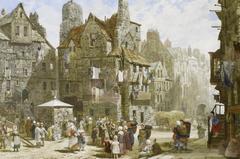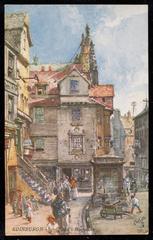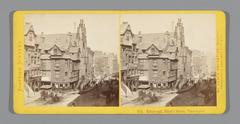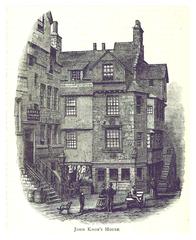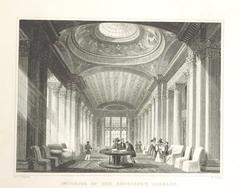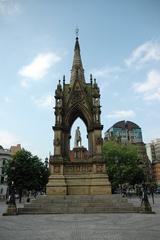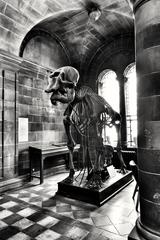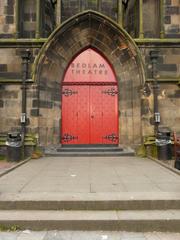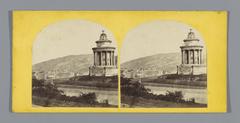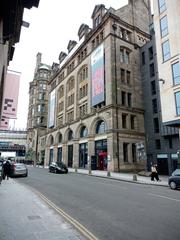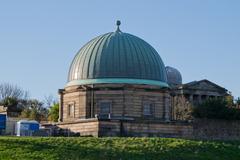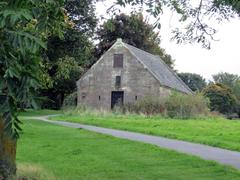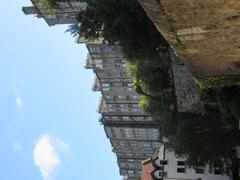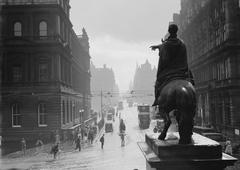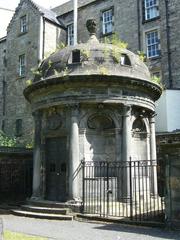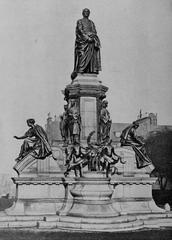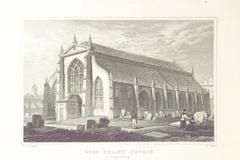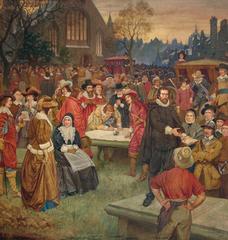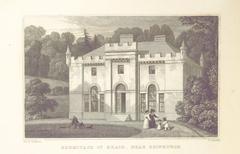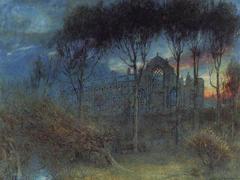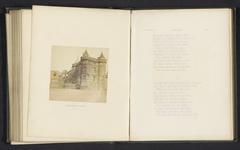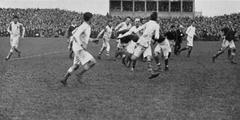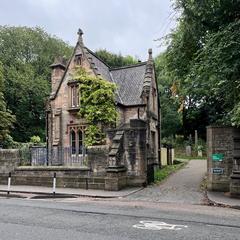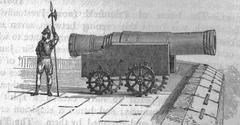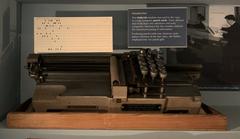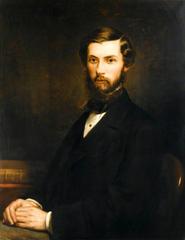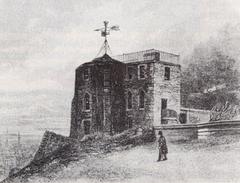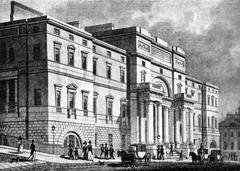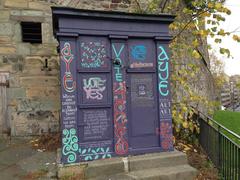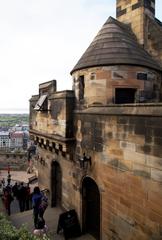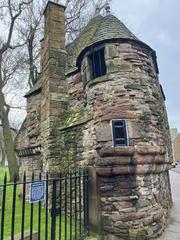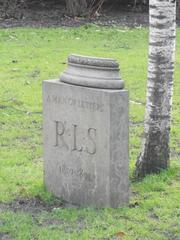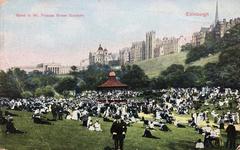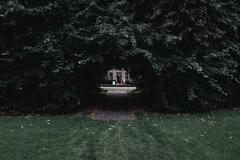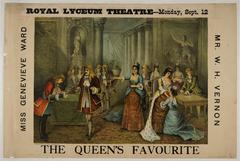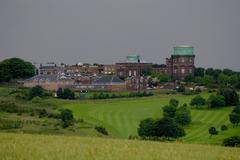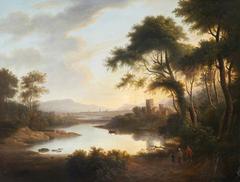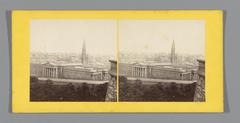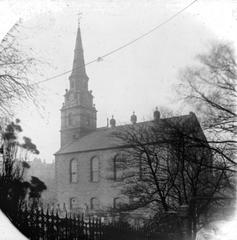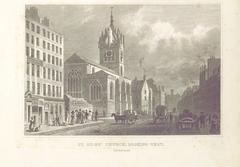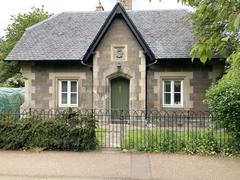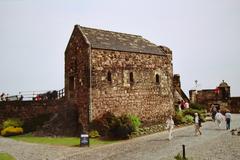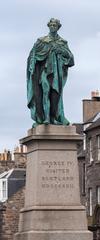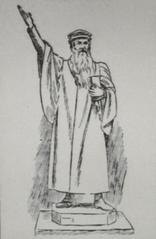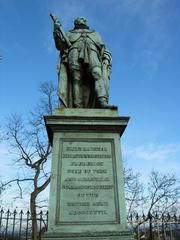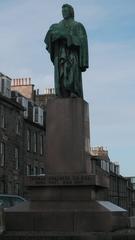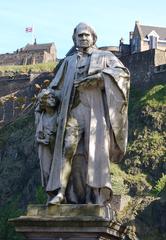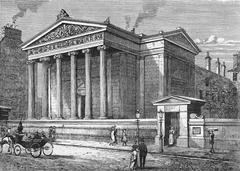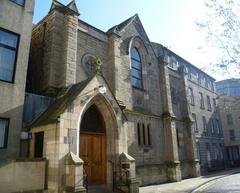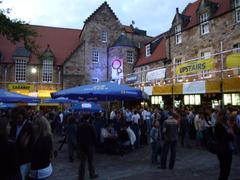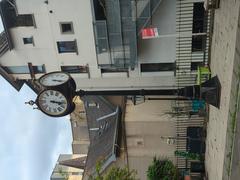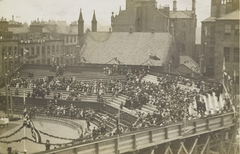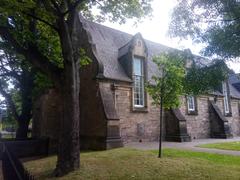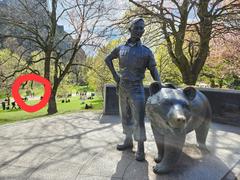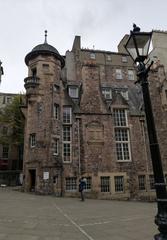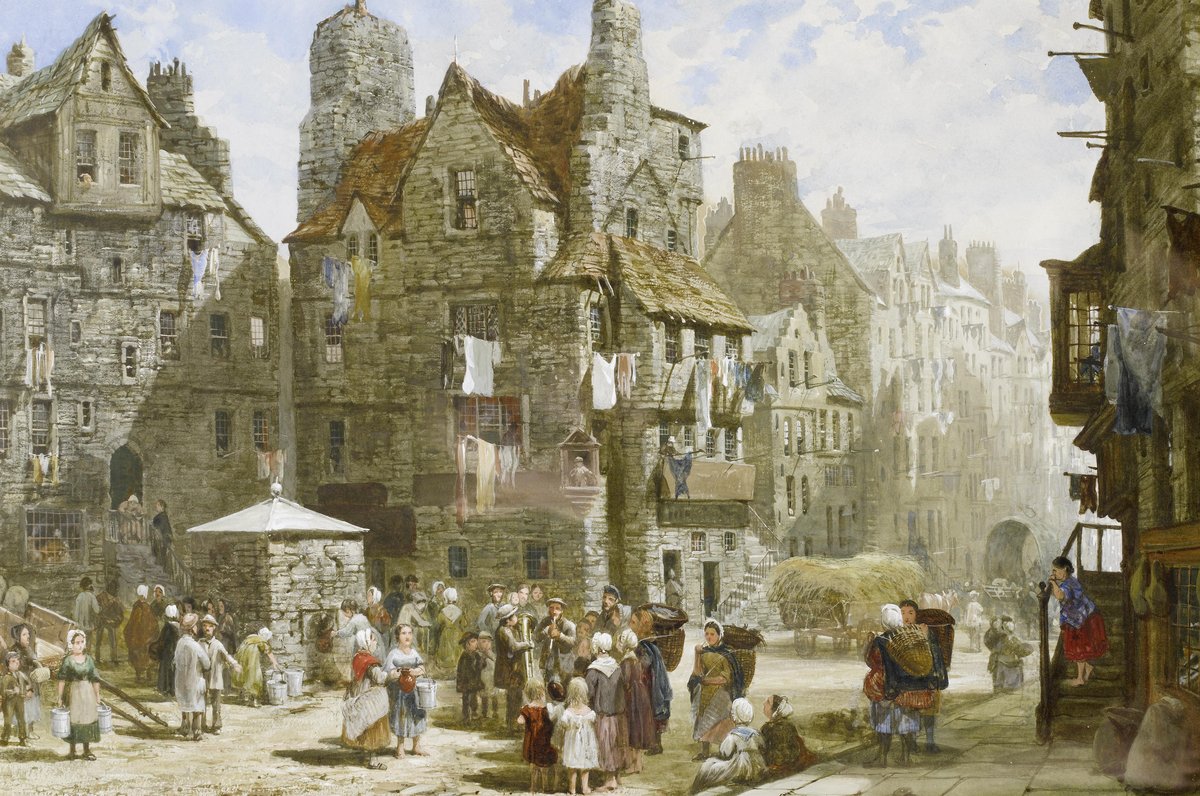
Visiting John Knox House: Tickets, Hours, and Travel Tips
Date: 24/07/2024
Introduction
John Knox House, located on Edinburgh’s Royal Mile, stands as a testament to Scotland’s rich and tumultuous past. This historic building, one of the oldest in Edinburgh, dates back to the mid-16th century with some elements tracing as far back as 1470. It offers visitors a unique window into the lives of its notable occupants and the significant events of the Scottish Reformation. Although primarily associated with John Knox, a pivotal figure in the Scottish Reformation, the house was originally constructed by Walter Reidpath and later came into the possession of his descendants, including the wealthy goldsmith James Mossman (Atlas Obscura, Britain Express). The house’s architectural features and historical exhibits provide a rare glimpse into the domestic architecture and lifestyle of 16th-century Scotland, making it an invaluable resource for historians, architects, and tourists alike. Visitors can explore the thick walls, turnpike stairs, and large fireplaces, all of which have been meticulously preserved through various renovation efforts (Scottish Storytelling Centre). Additionally, the house is part of the Scottish Storytelling Centre, enriching the visitor experience with live performances and cultural exhibitions (Explorial).
Early Ownership and Construction
The earliest reference to the building known as John Knox House appears in an archival document from 1525. Initially owned by Walter Reidpath, the property was bequeathed to his daughter’s son, John Arres, who subsequently passed it on to his daughter, Mariota, in 1556 (Atlas Obscura). The house itself dates back to the mid-16th century, with some architectural elements tracing as far back as 1470. This makes it one of the oldest surviving buildings on Edinburgh’s Royal Mile.
James Mossman and Mariota Arres
Mariota Arres married James Mossman, a wealthy royal goldsmith and jeweler. Mossman was a prominent figure in Edinburgh, known for his loyalty to Mary, Queen of Scots. His coat of arms and initials, along with the biblical inscription “Luve God abuve al and yi nychtbour as yi self,” can still be found outside the house (Britain Express). The house, part of Mariota’s dowry, became a symbol of their wealth and status.
The Scottish Reformation and John Knox
John Knox, a pivotal figure in the Scottish Reformation and founder of the Scottish Presbyterian Church, is believed to have lived in the house for a brief period before his death in 1572. Although there is no definitive proof that Knox resided there, the association has been strong enough to save the house from demolition multiple times (Britain Express). Knox’s influence on Scottish history is profound; he was instrumental in Mary, Queen of Scots’ abdication and was known for his fiery oratory and public debates with the queen.
The House Through the Centuries
In the 17th and 18th centuries, the area around John Knox House deteriorated into a slum as wealthier residents moved to the New Town. By 1800, the house was overcrowded, with multiple families living in each room (Britain Express). The house narrowly escaped demolition in the mid-19th century when the Church of Scotland intervened, transforming it into a museum dedicated to Knox’s life and times.
Renovation and Preservation
The house underwent significant renovations in the mid-19th century and was opened as a museum. This renovation preserved many original features, including thick walls, turnpike stairs, and large fireplaces with beautifully tiled backings (Atlas Obscura). The museum offers a glimpse into 16th-century life in Edinburgh, with exhibits spread across two floors. However, it is important to note that the exhibits are not wheelchair accessible.
Architectural Features
The house is a three-storey structure with a mix of 15th and 16th-century architectural elements. Visitors can explore the thick walls and turnpike stairs, which were designed to trip up potential intruders. The first floor features an exhibition on John Knox, including early editions of his writings and a typical goldsmith’s workshop setup (Britain Express). The second floor boasts superb wooden paneling, large floorboards, and a painted ceiling, highlighting the wealth and influence of its original occupants.
The Scottish Storytelling Centre
Attached to John Knox House is the Scottish Storytelling Centre, where visitors can attend live performances and exhibitions. This addition enriches the visitor experience by providing a broader cultural context to the historical significance of the house (Atlas Obscura). The centre also houses a gift shop and café, making it a convenient stop for tourists exploring the Royal Mile.
Preservation Efforts
The house’s preservation has been a community effort spanning centuries. In the 1840s, the building attached to John Knox House split away, nearly leading to its destruction. However, due to its association with Knox, it was saved from demolition. Excavations during renovations unearthed “time-capsules” commemorating the building’s preservation (Atlas Obscura). These efforts highlight the importance of the house as a historical and cultural landmark.
Visitor Information
John Knox House is open six days a week, Monday through Saturday, from 10 a.m. to 6 p.m. A nominal fee is charged, with concessions available for seniors, students, and others. The house is located on the Royal Mile, within easy walking distance of Edinburgh Castle and Holyrood House. While there is no on-site parking, the location is well-served by public transport (Britain Express).
Exhibits and Features
The house contains two floors of exhibits, including memorabilia related to John Knox and a typical goldsmith’s workshop. Visitors should take care on the spiral staircase, particularly the seventh step, which is spaced differently to trip up potential intruders. The second floor features the largest chamber, with superb wooden paneling, large floorboards, and a painted ceiling, showcasing the wealth and influence of James Mossman (Britain Express).
Hidden Gems
Often overlooked are the “Luckenbooths” located across from the service desk. These medieval market stalls, disguised behind bookshelves, offer a unique glimpse into Edinburgh’s commercial history. Additionally, visitors can spot one of the Edinburgh Book Sculptures in the corner by the windows facing the Royal Mile (Atlas Obscura).
Nearby Attractions
While visiting John Knox House, consider exploring other nearby historical sites such as Edinburgh Castle, Holyrood House, and the Museum of Edinburgh. These attractions provide a deeper understanding of Edinburgh’s rich history and culture.
Travel Tips
- Timing: Visit early in the day to avoid crowds.
- Tickets: Purchase tickets online in advance to save time.
- Accessibility: Note that the exhibits are not wheelchair accessible.
- Photography: Photography is allowed, but flash is prohibited to preserve the artifacts.
- Guided Tours: Consider booking a guided tour for a more in-depth experience.
Frequently Asked Questions (FAQ)
-
Q: What are the John Knox House visiting hours?
-
A: The house is open Monday through Saturday, from 10 a.m. to 6 p.m.
-
Q: How much are the John Knox House tickets?
-
A: A nominal fee is charged, with concessions available for seniors, students, and others.
-
Q: Is John Knox House wheelchair accessible?
-
A: No, the exhibits are not wheelchair accessible.
-
Q: What can I see inside John Knox House?
-
A: The house contains exhibits on John Knox and a typical goldsmith’s workshop, among other historical features.
Conclusion
John Knox House is a treasure trove of history, offering insights into the lives of its notable occupants and the turbulent times of the Scottish Reformation. Its preservation as a museum ensures that future generations can continue to explore and appreciate this significant historical landmark. Visitors can enhance their experience by attending live storytelling sessions at the Scottish Storytelling Centre and exploring nearby attractions on the Royal Mile. A visit to John Knox House is not only an educational journey but also a deeply immersive experience that brings Scotland’s vibrant past to life.
References
- Atlas Obscura. (n.d.). John Knox House. source
- Britain Express. (n.d.). John Knox House. source
- Scottish Storytelling Centre. (n.d.). History of the House. source
- UK Travel Planning. (n.d.). Guide to Walking the Royal Mile in Edinburgh. source
- Out About Scotland. (n.d.). John Knox House. source
- Explorial. (n.d.). Edinburgh John Knox House. source
